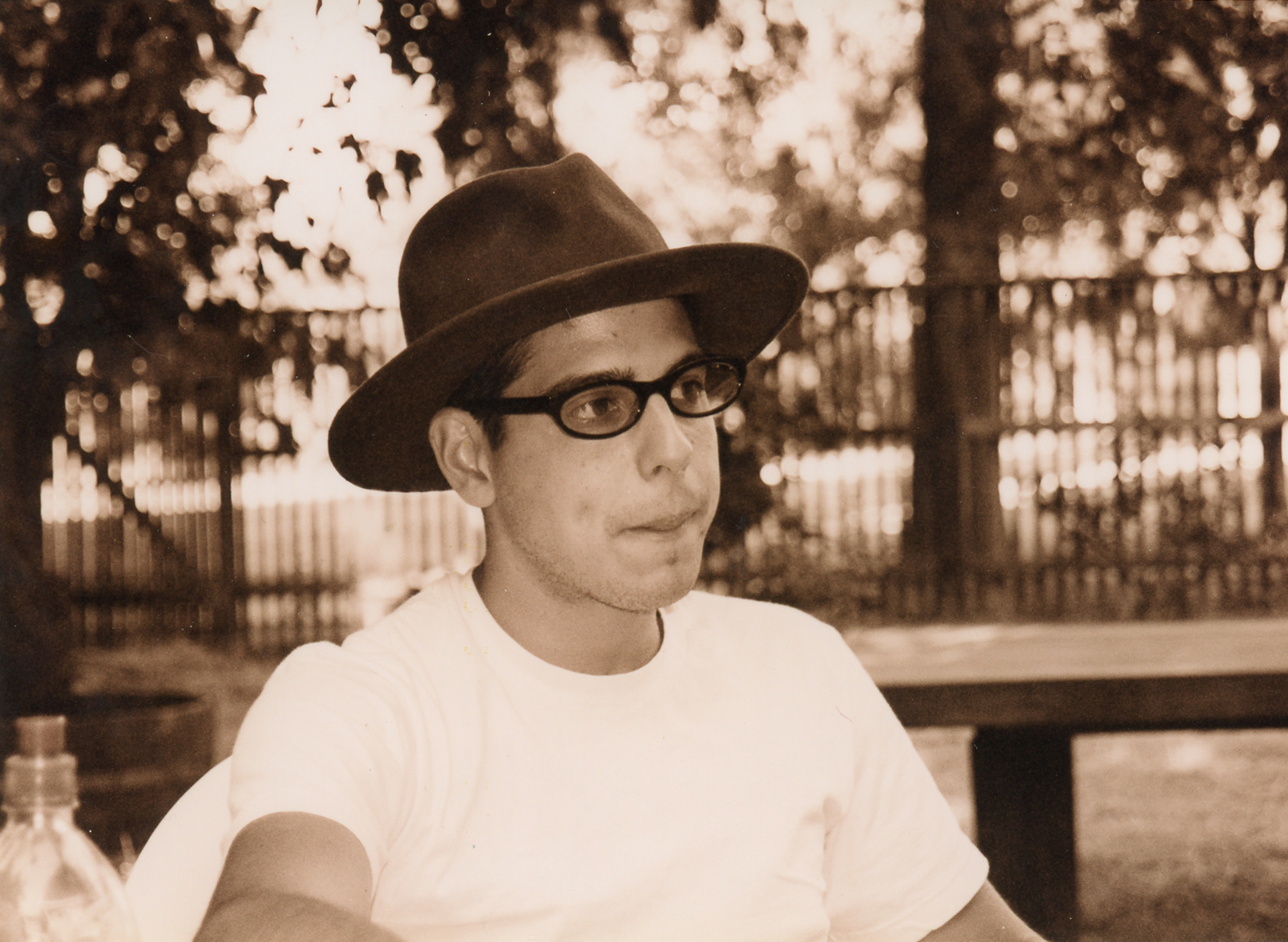 When COVID first started getting bad here in the U.S., the public library where I work closed and I was put on paid furlough until the city figured out what they wanted to do with us. I ended being asked to do contact tracing (which I’m still doing seven months later), but there was about a month and a half in between being told to stay home and starting the contract tracing work. Since I was fortunate enough to be on paid furlough during that time, I did not have to worry about finding other work and decided to fill my time with some projects around the house, including musical ones.
When COVID first started getting bad here in the U.S., the public library where I work closed and I was put on paid furlough until the city figured out what they wanted to do with us. I ended being asked to do contact tracing (which I’m still doing seven months later), but there was about a month and a half in between being told to stay home and starting the contract tracing work. Since I was fortunate enough to be on paid furlough during that time, I did not have to worry about finding other work and decided to fill my time with some projects around the house, including musical ones.
The first project I tackled was re-mixing the songs The Cubby Creatures recorded with Yoko Kato back in 1997 and 1998. Those will be released on an album called Avocado hopefully later in 2021. But the other major project I worked on was digitizing and remixing the “Davis sessions,” so called because The Cubby Creatures packed all their instruments and amplifiers into a few cars and drove from their homes in San Francisco to Davis, California for a weekend to record music at a friend’s father’s house who was away on vacation.
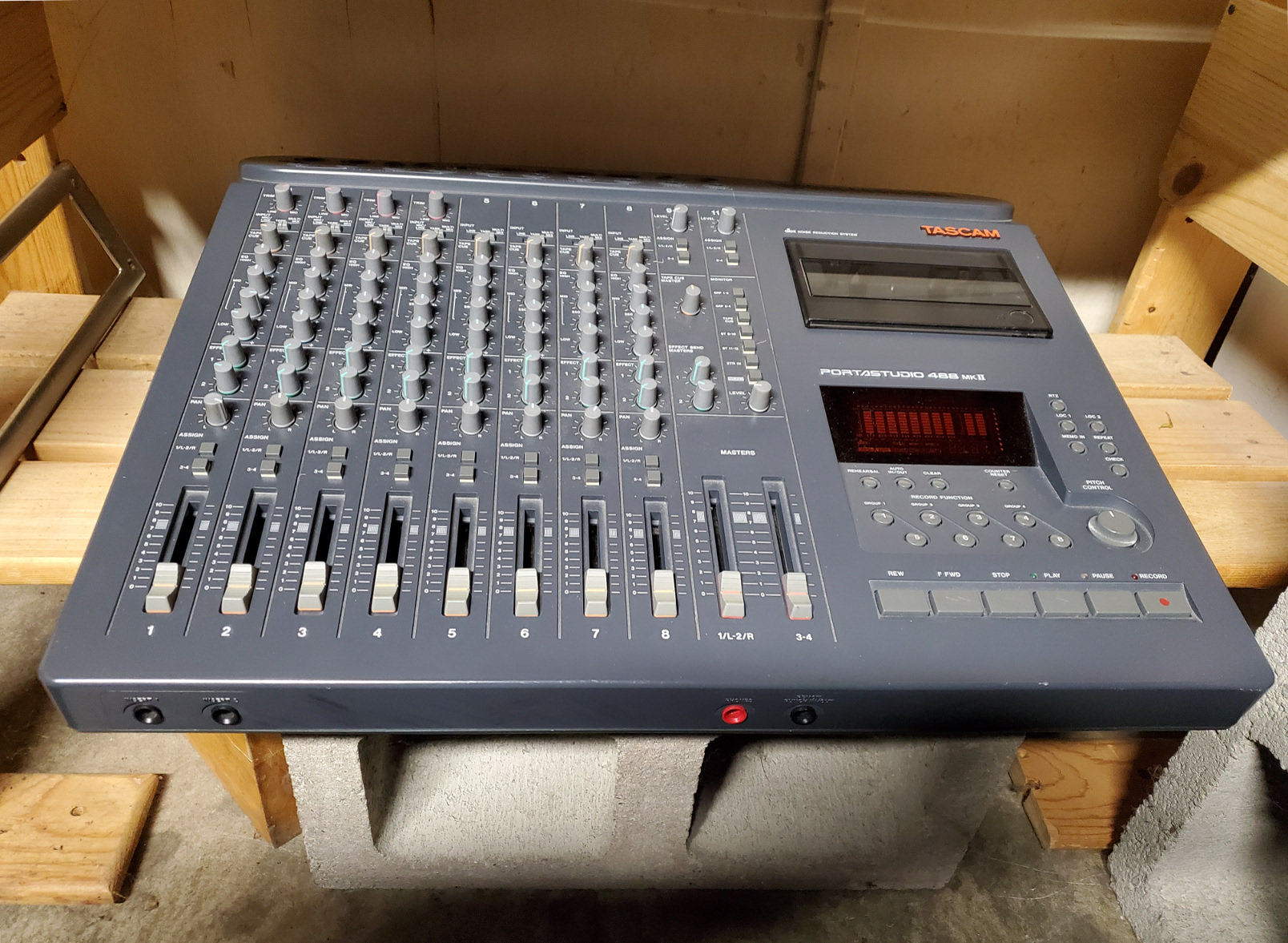 And what fancy recording equipment did The Cubby Creatures have to justify such a trip out to Davis? A Tascam Portastudio MKII 8-track cassette recorder and as many microphones as we could get our hands on (which were mostly Shure SM57s and SM58s). In other words, we didn’t have the kind of recording equipment needed to really justify such an outing. But with The Cubby Creatures it was often more about the music, the magic and the camaraderie than it was about rational matters of logistics and technicalities.
And what fancy recording equipment did The Cubby Creatures have to justify such a trip out to Davis? A Tascam Portastudio MKII 8-track cassette recorder and as many microphones as we could get our hands on (which were mostly Shure SM57s and SM58s). In other words, we didn’t have the kind of recording equipment needed to really justify such an outing. But with The Cubby Creatures it was often more about the music, the magic and the camaraderie than it was about rational matters of logistics and technicalities.
Since we had more instruments than tracks to record them on, we decided to group the guitar and bass guitar together onto one track, which was a big mistake for mixing purposes. We probably should’ve grouped the violin and clarinet together (though that would’ve created another set of problems). Ultimately we put three mikes on the drums (snare, overheard, bass); three separate mikes for violin, clarinet and keyboard; and then the one mike for both guitar and bass guitar amps. We left one track open for when we would record vocals later on. The result was that these songs ended up being very difficult to mix straight from the Tascam itself, which is why only two of the songs ever saw the light of day, “Message to John John” and “Until the Quake Comes” (released on the Cubbies’ first album The Blessed Invention), and ultimately why I abandoned them, even after adding vocals to a few other tracks (“Rhythm Guitar,” “Diseases” and “Johnson 6”). But now in the digital age, I’m able to dig a little deeper into these mixes and clean them up like I never was before.
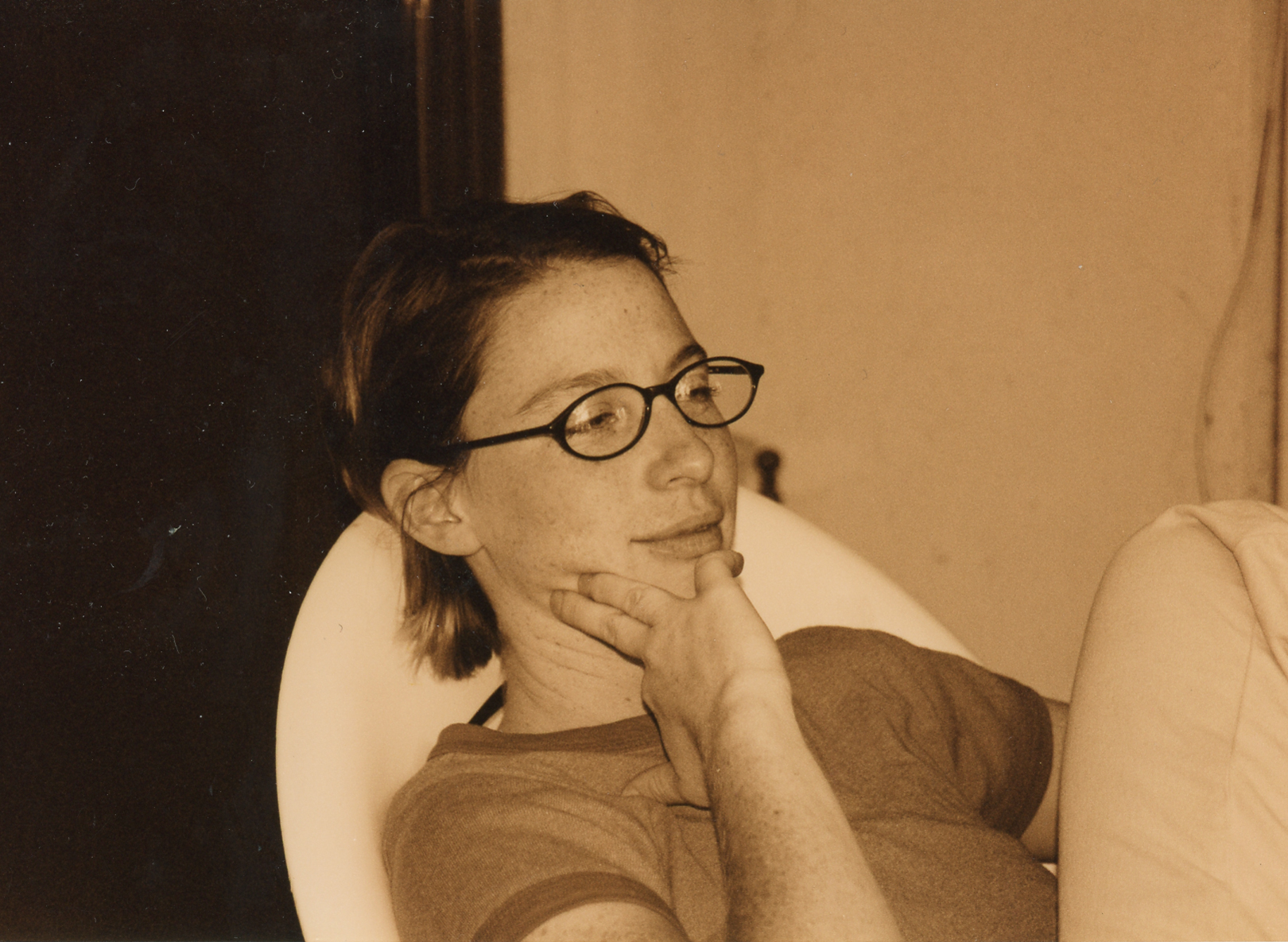 However, a series of setbacks would impede my progress. First, I realized that I would have to digitize each track one at a time (instead of being able to just press play on the Tascam Portastudio and import all the tracks separately into my computer). This meant that for each song, I would have to press play seven times (or eight if there were vocals) to digitize each track of the song. So a four-minute song like “Diseases” would take almost 30 minutes to digitize. And of course since this is an analog cassette tape machine, each time I played the separate tracks to import then into my computer, the timing would be ever so slightly off, meaning that I would have to digitally edit each track to be the same length of time, an incredibly time-consuming process which involves going into each of the seven or eight tracks of a song and remove snippets of time so that all the tracks sound in sync.
However, a series of setbacks would impede my progress. First, I realized that I would have to digitize each track one at a time (instead of being able to just press play on the Tascam Portastudio and import all the tracks separately into my computer). This meant that for each song, I would have to press play seven times (or eight if there were vocals) to digitize each track of the song. So a four-minute song like “Diseases” would take almost 30 minutes to digitize. And of course since this is an analog cassette tape machine, each time I played the separate tracks to import then into my computer, the timing would be ever so slightly off, meaning that I would have to digitally edit each track to be the same length of time, an incredibly time-consuming process which involves going into each of the seven or eight tracks of a song and remove snippets of time so that all the tracks sound in sync.
But then, when I had gotten about halfway through digitizing and digitally editing the songs, the Tascam stopped working. I wasn’t even sure how to go about addressing this. At first, I just kept hitting the play button over and over hoping it would miraculously start working again, as well as the usual powering off and on and unplugging and replugging. I even got out the Q-tips and rubbing alcohol to clean the tape heads. But no luck. So then my questions were, do I find someone to fix it, do I buy a new one, or do I try to fix it myself?
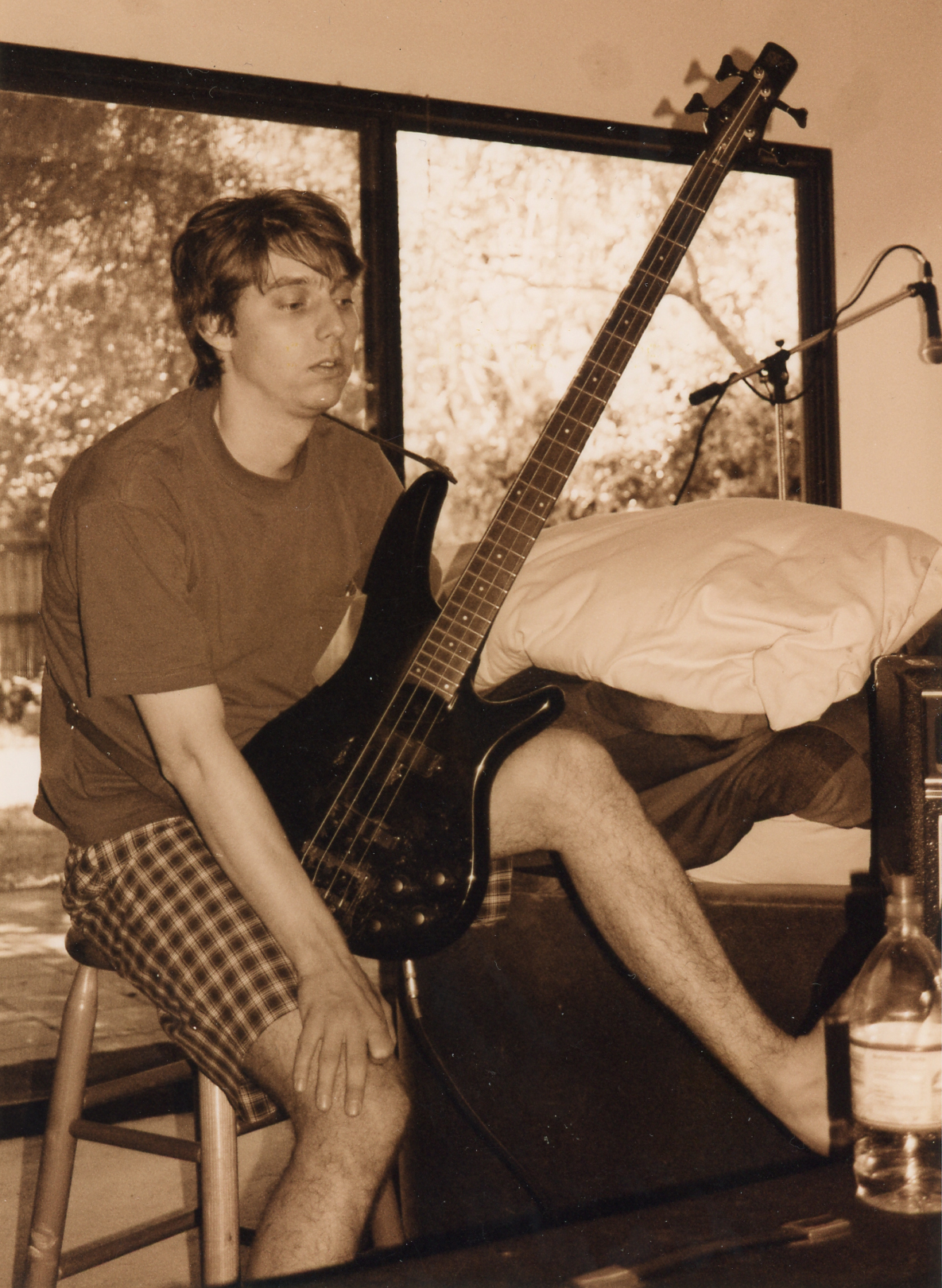 Ultimately the answer was none of those. Though, I did search for anyone selling the same type of machine on eBay and elsewhere (too expensive). Then I tried to find someone who could fix it (few options during COVID shutdown). And lastly I attempted to fix it myself after watching YouTube videos of people disassembling their Tascams. I ordered some parts online that I thought needed to be replaced, and then proceeded to irreparably damage my Portastudio in an effort to just open it up and look inside. So now I was stuck with a permanently broken machine and at least 4 more songs that I wanted to digitize.
Ultimately the answer was none of those. Though, I did search for anyone selling the same type of machine on eBay and elsewhere (too expensive). Then I tried to find someone who could fix it (few options during COVID shutdown). And lastly I attempted to fix it myself after watching YouTube videos of people disassembling their Tascams. I ordered some parts online that I thought needed to be replaced, and then proceeded to irreparably damage my Portastudio in an effort to just open it up and look inside. So now I was stuck with a permanently broken machine and at least 4 more songs that I wanted to digitize.
And that’s when I found Calvin. His posting is no longer on eBay, and I don't remember exactly how it was worded, but it was something to the effect of "Tascam 488 Tape Transfer Service, Price: $50.00" and included a picture of the same kind of Tascam 8-track cassette recorder I have. I sent him a message through eBay asking for details and he replied with a phone number and said to call him "Tomorrow 10am-8pm." I called him the next day and Calvin told me he was currently in Florida, and all his equipment was at his parents' house in Illinois, but he'd be driving back there soon and would let me know when he arrived. He also explained to me that he had a Tascam Portastudio MKII 8-track cassette recorder, just like the one I have, but had nodified it so that one could just press play once and export each track of each song separately into a computer. All I had to do was send him the tapes, pay him $25 per tape I wanted digitize via PayPal, and he'd send the tapes back to me along with a flash drive with WAV files of all the digitized tracks.
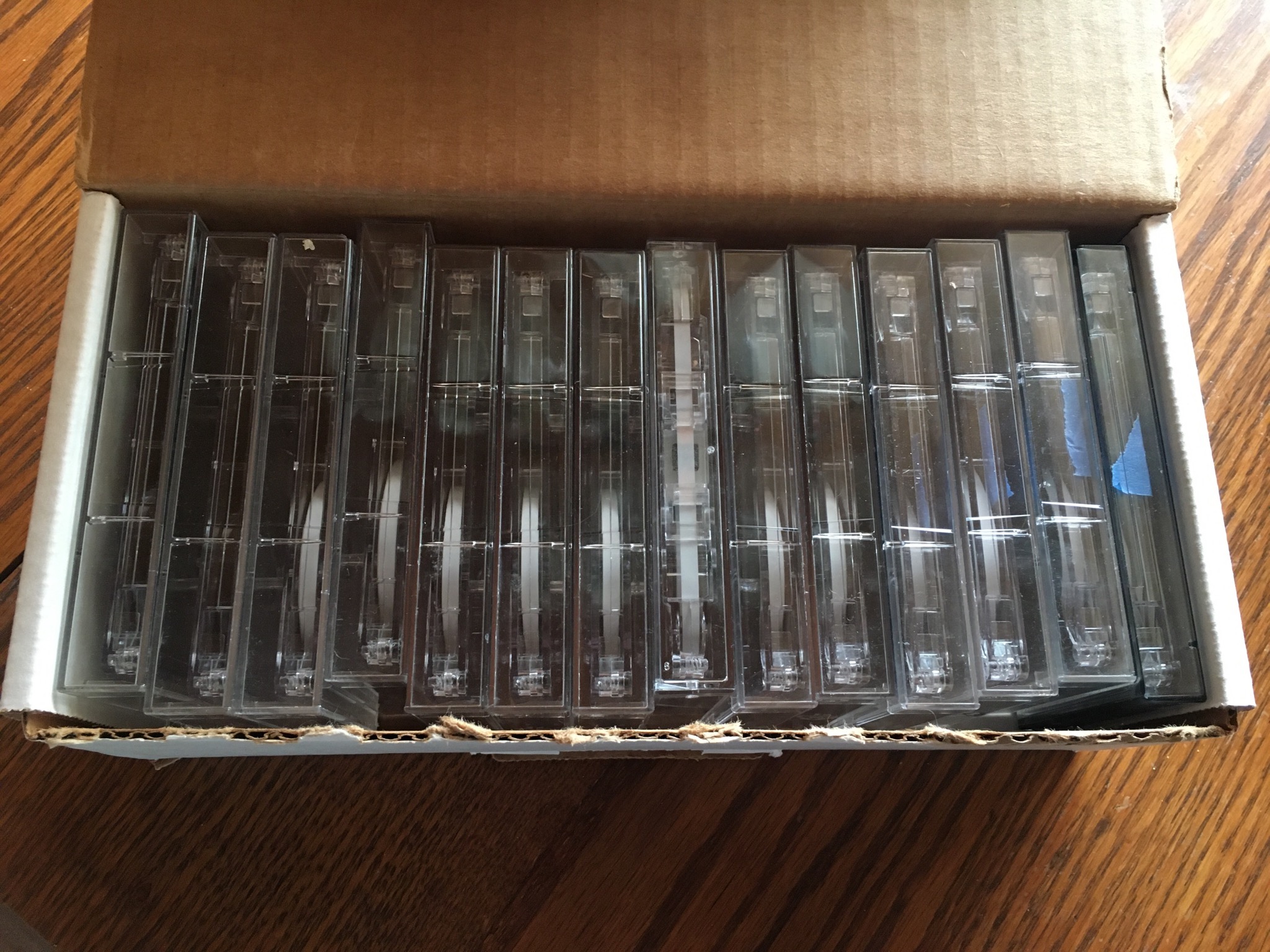 Though not exactly cheap (there were 10 Davis sessions tapes I wanted Calvin to digitize, plus a few others that I figured should be digitized, as this may be the only chance to do so), it was definitely less expensive than buying a new machine, and it would save me hours of painstaking digital tweaking. I also had some trepidation about sending off the only copies of the Davis sessions master tapes and transferring money to someone I had never met, but I put my trust in the USPS and the often befuddling Cubby Fate, boxed up the tapes and walked down to the local post office to mail them to Illinois.
Though not exactly cheap (there were 10 Davis sessions tapes I wanted Calvin to digitize, plus a few others that I figured should be digitized, as this may be the only chance to do so), it was definitely less expensive than buying a new machine, and it would save me hours of painstaking digital tweaking. I also had some trepidation about sending off the only copies of the Davis sessions master tapes and transferring money to someone I had never met, but I put my trust in the USPS and the often befuddling Cubby Fate, boxed up the tapes and walked down to the local post office to mail them to Illinois.
Calvin proved to be a stand-up guy, providing frequent updates via text and completing the project, including sending the tapes back to me along with a flash drive of all the uncompressed digitized audio files, within two weeks. Cubby Fate (and the good ole USPS) had determined the tapes would be delivered and returned to me without problem. Then began the process of starting from scratch, mixing the tracks for inclusion on SMR4. And though there are imprefections that could not be overcome, even in a digital environment, I was able to produce mixes that are at least listenable and at best delightful. Who knew 21 years after trekking out to Davis, I'd be mixing, mastering and releasing the songs recorded there, as part of the Source Mirror Record project.
- Brian Weaver, 1/1/2021